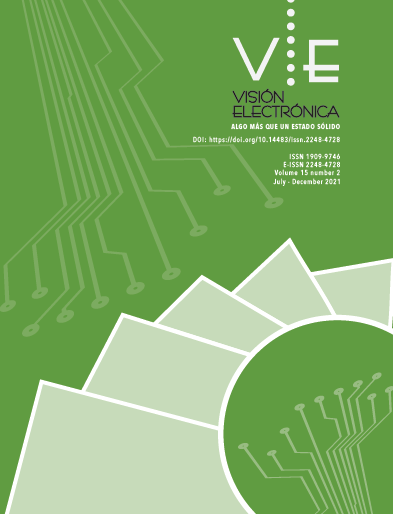Publicado:
2023-03-22Número:
Vol. 17 Núm. 1 (2023)Sección:
Visión InvestigadoraApplication of Cellular Automatons and Genetic Algorithms in the Creation of a Steganographic Technique
Aplicación de Autómatas Celulares y Algoritmos Genéticos en la Creación de una Técnica Esteganográfica
Palabras clave:
Cellular automaton, Evolution, Genetic algorithm, Security, Steganography (en).Palabras clave:
Autómata celular, Evolución, Algoritmo genético, Seguridad, Esteganografía (es).Descargas
Resumen (en)
This article describes the creation of a Steganographic technique focused on image analysis, supported by Artificial Intelligence (AI) methods and mathematical optimization models [18]. Initially, a two-dimensional Cellular Automaton (AC) (d=2) with Moore's vicinity (N(1)=8) is used, evolution is semitotalistic in order to select the most suitable pixels (cells), from those defined in Eden, by applying a set of transition rules, defined in terms of the Game of Life, over several generations. Then through Genetic Algorithms the CA rules will be improved, to finally obtain a position vector, which will be given by the implementation of a one-dimensional AC, whose operation is executed using the rules of Wolfram 30 or 150 as the case may be [1]. This method has been called Modular Steganography,
Resumen (es)
El presente artículo describe la creación de una técnica Esteganográfica enfocada en el análisis de imágenes, soportada en métodos de Inteligencia Artificial (IA) y modelos matemáticos de optimización [18]. Inicialmente, se utiliza un Autómata Celular (AC) bidimensional (d=2) con vecindad de Moore (N(1)=8), la evolución es semitotalista con el fin de seleccionar los píxeles (células) más aptos, de aquellos definidos en el Edén, mediante la aplicación de un conjunto de reglas de transición, definidas en términos del Juego de la Vida, a través de varias generaciones. Luego mediante Algoritmos Genéticos se mejorarán las reglas del AC, para finalmente obtener un vector de posición, que estará dado por la implementación de un AC unidimensional, cuya operación se ejecuta mediante las reglas de Wólfram 30 o 150 según el caso [1]. Este método ha sido denominado Esteganografía Modular.
Referencias
S. Wolfram, and N. H. Packard, "Two-dimensional Cellular Automata," J. Statist. Phys., vol. 38, 1985. https://doi.org/10.1007/BF01010423
J. D. Muñoz Castaño, "Autómatas Celulares y Física Digital," in Memorias del Primer Congreso Colombiano de Neuro Computación, Santa fe de Bogotá, D.C.: Academia Colombiana de Ciencias Exactas, Físicas y Naturales, 1996, p. 28.
J. C. Hernández, "Algunas Generalizaciones en Autómatas Celulares," Consejo Nacional de Ciencia y Tecnología - CONACYT, Mexico, 2008.
G. Juárez, "Teoría del Campo Promedio En Autómatas Celulares Similares a 'The Game Of Life'," Centro de Investigación y Estudios Avanzados del Instituto Politécnico Nacional, Mexico, 2000.
E. Cuevas, D. Zaldívar, and M. Pérez, "Procesamiento digital de imágenes con MATLAB y Simulink," Alfaomega Grupo Editor; RA-MA Editorial, Mexico, 2010.
M. A. Muñoz, "Privacidad y ocultación de información digital: Esteganografía protegiendo y atacando redes informáticas," Ra-ma, Ediciones de la U, Madrid, Bogotá, Spain, Colombia, 2017.
C. Ponce, "Inteligencia Artificial con aplicaciones a la ingeniería," Alfa Omega Grupo Editor, Mexico, 2010.
W. S. Wolfram, "Cellular automata as simple self-organizing systems," Caltech preprint CAL-68-938, Pasadena, 1982.
M. Espínola, "Clasificación de Imágenes de Satélite mediante Autómatas Celulares," Universidad de Almería, Almería, 2011.
E. F. Moore, "Machine Models Of Self-Reproduction," in Proceedings of Symposia in Applied Mathematics, vol. 14, 1963. https://doi.org/10.1090/psapm/014/9961
C. Á. Guerrero, "RapaNui - Isla de Pascua," RapaNui, Chile, /2018.
A. Cheddad, J. Condell, K. Curran, and P. McKeitt, "Digital image steganography: Survey and analysis of current methods," School of Computing and Intelligent Systems, University of Ulster at Magee, Northern Ireland, Signal Processing, vol. 90, no. 3, 2010. https://doi.org/10.1016/j.sigpro.2009.08.010
A. De La Cruz Franco, "Implementación de un Algoritmo Computacional para Esteganografía basado en técnicas del bit menos significativo," Universidad de Quintana Roo, Chetumal, Mexico, 2017.
J. I. Vázquez and J. Oliver, "Evolución de Autómatas Celulares utilizando Algoritmos Genéticos," Universidad de Deusto, Bilbao, Spain, 2008.
A. Miri and K. Faez, "Adaptive Image Steganography based on transform domain via Genetic Algorithm," Department of Electrical Engineering, Amirkabir University of Technology, Tehran, Iran, Optika, vol. 145, 2017. https://doi.org/10.1016/j.ijleo.2017.07.043
S. Mukjerjee, S. Roy, and G. Sanyal, "Image Steganography Using Mid Position Value Technique," National Institute of Technology Durgapur, Durgapur, India, Procedia Computer Science, vol. 132, 2018. https://doi.org/10.1016/j.procs.2018.05.160
A. Westfeld and A. Pfizmann, "Attacks on Steganographic Systems," Department of Computer Science, Dresden University of Technology, Dresden, Germany, Information Hiding, 1999. https://doi.org/10.1007/10719724_5
H. Caballero, "Cálculo de la dispersión de pixels en imágenes RGB para Esteganografía con base en la teoría fractal," Facultad de Ingeniería, Universidad Autónoma de México, Toluca de Lerdo, Mexico, 2020.
J. Fridrich, M. Goljan, and R. Du, "Reliable Detection of LSB steganography in color and grayscale images," Department of Electrical and Computer Engineering, Binghamton University, Binghamton, U.S.A., 2002. https://doi.org/10.1145/1232454.1232466
Cómo citar
APA
ACM
ACS
ABNT
Chicago
Harvard
IEEE
MLA
Turabian
Vancouver
Descargar cita
Visitas
Descargas
Licencia

Esta obra está bajo una licencia internacional Creative Commons Atribución-NoComercial 4.0.
.png)
atribución- no comercial 4.0 International






.jpg)





